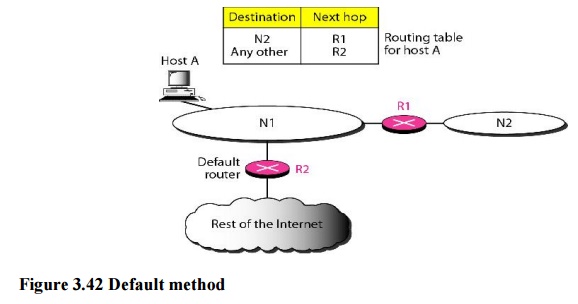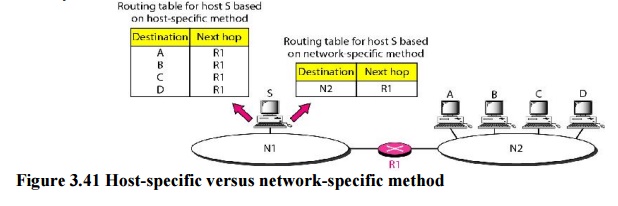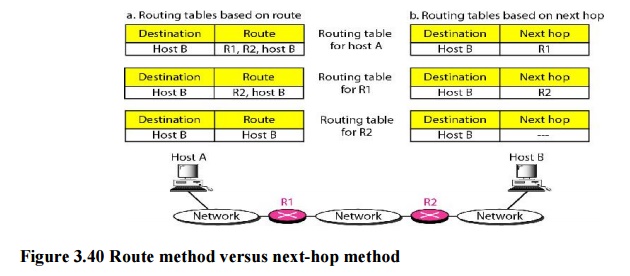Explain Different Forwarding Techniques in Computer Network
Mesh topology has two techniques for transmission of data ie. The term attributed to firewall expert Marcus Ranum is borrowed from the legal and criminology fields where forensics pertains to the investigation of crimes According to Simson.

Frame Forwarding Methods On Switches Geeksforgeeks
A switching method explains how a switch starts the forwarding phase of internal frame processing.

. Multi-VRF uses input interfaces to classify routes for different VPNs and build a virtual packet-forwarding tables by assigning Layer 3 interfaces to each VRF. The store-and-forward method the fragment-free method and the cut-through method. It uses packet switching technique to receive store and forward data packets on the network.
These are explained as following below. In the flooding technique all the network nodes receive the same data. At the source it accepts a packet from the transport layer encapsulates it in.
The Circuit Switching technique establishes a dedicated path or channel between the sender and receiver for data transmission and once a dedicated path is established then it does not terminate it until and unless the connection between the two data transmission point terminates. There are three types of switching methods. There are 2 methods that all switch use for forwarding the frames switching data between the network ports.
Types and Its Design Issues. Interfaces in a VRF can be either physical such as EthernetGig ports or logical such as VLAN SVIs Switched Virtual Interfaces but a Layer 3 interface cannot assign to more than one VRF at any one time. LAN Local Area Network.
The switch maintains a list of network addresses of all the devices. It uses Ethernet or Token-ring technology. Multicast Routing Multicast routing is special case of broadcast routing with significance difference and challenges.
This is suited for larger networks where manual feeding may not be feasible due to large number of routers. Reverse path forwarding is a technique in which router knows in advance about its predecessor from where it should receive broadcast. It monitors the network traffic and acts as a barrier between the trusted and untrusted network.
Dinesh authors the hugely popular Computer Notes blog. Dinesh Thakur holds an BCA MCDBA MCSD certifications. Systems connected in a small network like in a building or a small office.
OSI Open System Interconnection model outlines the clear. A router is a networking device that forwards the packet based on the information available in the packet. The device needs sufficient secondary.
Store and forward switching. A Router is a process of selecting path along which the data can be transferred from source to the destination. Its main function is to transfer network packets from the source to the destination.
Switch is a network device that connects other devices to Ethernet networks through twisted pair cables. LAN Local Area Network represents a small segment of network that can be span in limited geographical area such as your home network university campus cyber café and office building. A Router works at the network layer in the OSI model and internet layer in TCPIP model.
It is involved both at the source host and the destination host. In the routing technique the nodes possess a routing logic like the logic for the shortest distance to the destination node or the logic to avoid routes with broken connections. Network forensics is the capture recording and analysis of network events in order to discover the source of security attacks or other problem incidents.
In the scope of entire computer science the approach of Network Layer assists to know about convoluted network interactions. A message-switching node is typically a general-purpose computer. There comes the exposure of many network layers but the one well-known model is the OSI approach with 7 layers.
Any network in use makes use of switching with respect to packet time and IP addresses therefore making all the concepts useful and easy to understand with implementation to the nodes which are present for hopping and address migration. Difference between LAN and WAN. Dinesh Thakur is a Freelance Writer who helps different clients from all over the globe.
Two or more personal computers can be connected through wires or cables acting as nodes. In general forwarding refers to a device sending a datagram to the next device in the path to the destination switching refers to moving a datagram from one interface to another within a device and routing refers to the process a layer-3 device uses to decide on what to do with a layer-3 packet. The value stored in the forwarding table entry for that header indicates the routers outgoing link interface to which the packet is to be forwarded.
WAN is the abbreviated form of Wild Area Network. There are basically two methods by which a switch forwards the received packets namely store and forward method and the cut through switching method Store and Forward Method In this method the switch receives a frame into a buffer and store it until it receives the complete frame. The concept of Firewall is important for people interested in understanding the network security aspect of a computer device and also for those looking forward to.
Switching Techniques play a very pivotal role in the networking domain. This type of network is called a store-and-forward network. These network segments can be located far apart.
In all three methods the first and second phases are the same. Routing is performed by a special device known as a router. The message is then transmitted through the network in its entirety from node to node.
Each node receives the entire message stores it in its entirety on disk and then transmits the message to the next node. Network layer is the third layer in the OSI model of computer networks. Out of three methods circuit switching and packet switching are commonly used but the message switching has been opposed out in the general communication procedure but is still used in the networking application.
Where he writes how-to guides around Computer fundamental computer software Computer programming and web apps. There are five main types of Computer Networks. A router forward a packet by examining the value of a field in the arriving packets header and then using this header value to index into the routers forwarding table.
This technique is used to detect and discard duplicates. Network Layer Services- Packetizing Routing and Forwarding.


Comments
Post a Comment